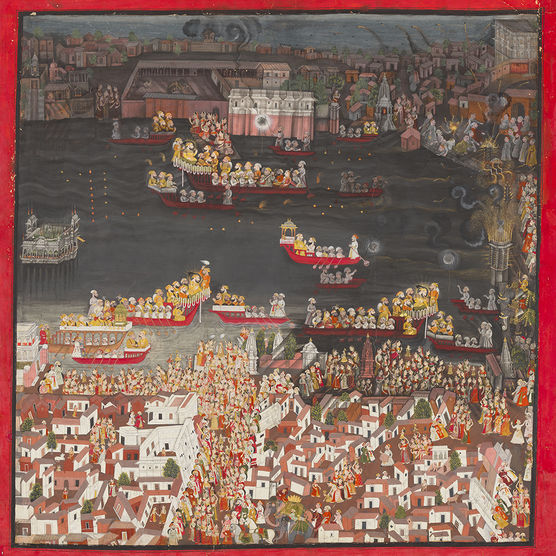The lake city of Udaipur in northwestern India, the sixteenth-century capital of the Mewar court, flourished through the management of natural resources and experiments in art. Join this two-part presentation with Padmaja Kumari Parmar, a daughter of the House of Mewar, speaking on living heritage and Dipti Khera, Associate Professor of Art History at New York University, discussing how representations of place from Udaipur trace the major shifts in India’s long eighteenth century.
This event is cosponsored by the Princeton University Art Museum and the M. S. Chadha Center for Global India.
Free registration here.
Speakers:
Padmaja Kumari Parmar, “Mewar Arts: A Living Heritage”
Parmar is the daughter of the current head of the House of Mewar, the former royal house of Udaipur in Rajasthan, India. Parmar’s interests span philanthropy, hospitality, art, and health. In 2013, she founded the Friends of Mewar Foundation in Boston, which aims to preserve cultural heritage, provide access to preventative healthcare, and promote women’s empowerment and education.
Dipti Khera, “The Place of Many Moods: Udaipur’s Painted Lands and India’s Eighteenth Century”
As a scholar of early modern South Asia, Khera’s research and teaching integrate longue durée perspectives and Indian Ocean and Eurasian geographies. Her book The Place of Many Moods: Udaipur’s Painted Lands and India’s Eighteenth Century (Princeton University Press, 2020) received the Edward Cameron Dimock, Jr. Prize in Indian Humanities (American Institute of Indian Studies). Her collaborative work with Rajasthan’s museums and libraries has led to conservation, exhibition, and digital projects, including cocurating an exhibition with Smithsonian curator Debra Diamond, A Splendid Land: Paintings from Royal Udaipur, opening at the National Museum of Asian Art in November 2022.
